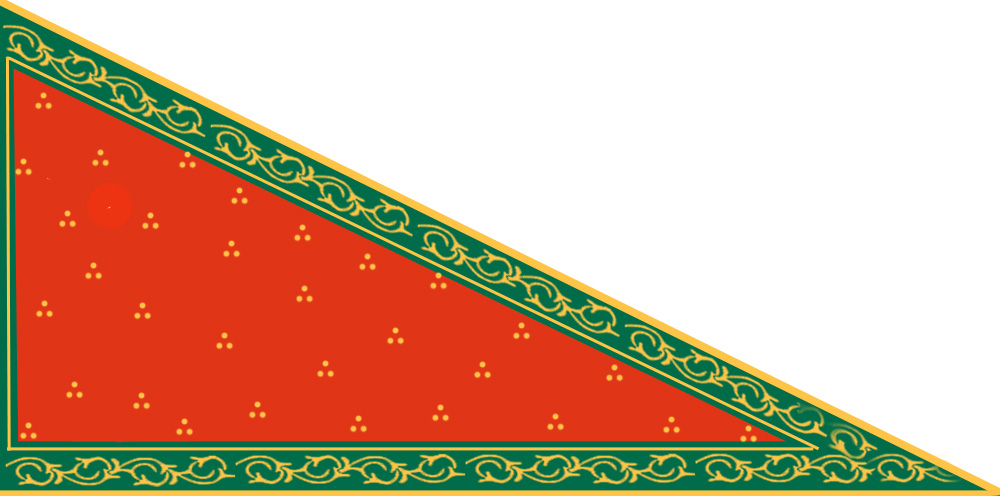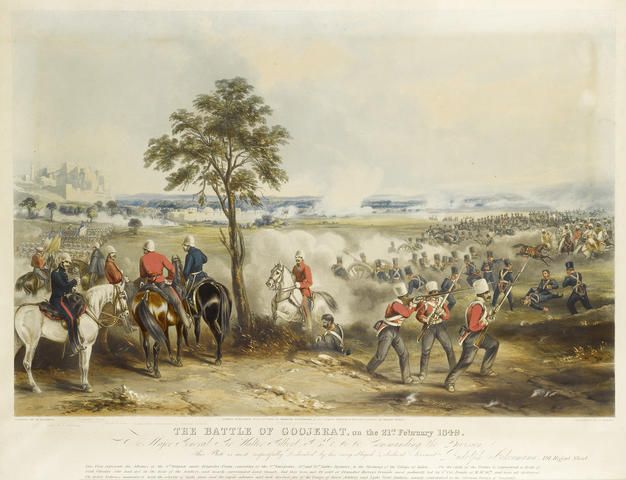|
Battle Of Chillianwala
The Battle of Chillianwala (also spelled Chillianwallah) was fought in January 1849 during the Second Anglo-Sikh war in the Chillianwala region ( Mandi Bahauddin) of Punjab, now part of Pakistan. The battle was one of the bloodiest fought by the British East India Company. Both armies held their positions at the end of the battle and both sides claimed victory.Heath, p.42 The battle was a strategic check to immediate British ambitions in India and a shock to British military prestige.Major A. H. Amin (retd.) Orbat.com Background The broke out in the Punjab, which had recently lost much of its independence to th ...[...More Info...] [...Related Items...] OR: [Wikipedia] [Google] [Baidu] |
Second Anglo-Sikh War
The Second Anglo-Sikh War was a military conflict between the Sikh Empire and the East India Company which took place from 1848 to 1849. It resulted in the fall of the Sikh Empire, and the annexation of the Punjab region, Punjab and what subsequently became the North-West Frontier Province, by the East India Company. On 19 April 1848, Patrick Alexander Vans Agnew, Patrick Vans Agnew of the civil service and Lieutenant William Anderson of the Bombay European regiment, having been sent to take charge of Multan from Diwan Mulraj Chopra, were murdered there; within a short time, the Sikh troops joined in open rebellion. Governor-General of India James Broun-Ramsay, 1st Marquess of Dalhousie, Lord Dalhousie agreed with Hugh Gough, 1st Viscount Gough, Sir Hugh Gough, the commander-in-chief, that the British East India Company's military forces were neither adequately equipped with transport and supplies, nor otherwise prepared to take the field immediately. He also foresaw the spre ... [...More Info...] [...Related Items...] OR: [Wikipedia] [Google] [Baidu] |
Chattar Singh Attariwalla
Chattar Singh Attariwalla, also spelt Chatar Singh Aṭārīvālā, was Governor of Hazara province and a military commander in the army of the Sikh Empire during the reign of Maharaja Duleep Singh in the Punjab. He fought in the Second Anglo-Sikh war against the British. Family Chatar Singh was the son of Jodh Siṅgh Aṭārīvālā. He had two sons, Raja Sher Singh Attariwalla and Avtār Singh. Sher Singh commanded the Sikh army which fought against the British East India Company at the Battle of Chillianwala.George Bruce Malleson, ''Decisive Battles of India''. His daughter Tej Kaur was betrothed to Duleep Singh, but after the First Anglo-Sikh War the British Resident, Sir Frederick Currie did not honour the betrothal. Career On the death of his father in August 1815, Chatar Singh inherited large jagirs and occupied himself with farming his estates. He rose to political prominence in 1843, after the assassination of Maharaja Sher Singh, and his daughter Tej Kaur w ... [...More Info...] [...Related Items...] OR: [Wikipedia] [Google] [Baidu] |
Battle Of Chillianwalla
The Battle of Chillianwala (also spelled Chillianwallah) was fought in January 1849 during the Second Anglo-Sikh war in the Chillianwala region (Mandi Bahauddin) of Punjab region, Punjab, now part of Pakistan. The battle was one of the bloodiest fought by the British East India Company. Both armies held their positions at the end of the battle and both sides claimed victory.Heath, p.42 The battle was a strategic check to immediate British ambitions in India and a shock to British military prestige.Major A. H. Amin (retd.) Orbat.com Background The Second Anglo-Sikh war broke out in the Punjab, which had recently lost much of its independence to the British East India Company following the First Anglo-Sikh War, in April 1848, when the city of Multan rebelled under Dewan Mul ...[...More Info...] [...Related Items...] OR: [Wikipedia] [Google] [Baidu] |
Dost Mohammad Khan
Dost Mohammad Khan Barakzai (Pashto/; 23 December 1792 – 8 June 1863), nicknamed the Amir-i Kabir, was the founder of the Barakzai dynasty and one of the prominent rulers of Afghanistan during the First Anglo-Afghan War. With the decline of the Durrani dynasty, he became the Emir of Afghanistan in 1826. An ethnic Pashtun, he belonged to the Barakzai tribe. He was the 11th son of Payinda Khan, chief of the Barakzai Pashtuns, who was killed in 1799 by King Zaman Shah Durrani. At the beginning of his rule, the Afghans lost their former stronghold of Peshawar Valley in March 1823 to the Sikh Khalsa Army of Ranjit Singh at the Battle of Nowshera. The Afghan forces in the battle were led by Azim Khan, half-brother of Dost Mohammad Khan. By the end of his reign, he had reunited the principalities of Kandahar and Herat with Kabul. Dost had ruled for a lengthy 36 years, a span exceeded only by Zahir Shah more than a century later. A brilliant strategist, and ruthless fight ... [...More Info...] [...Related Items...] OR: [Wikipedia] [Google] [Baidu] |
Joseph Thackwell
Lieutenant-General Sir Joseph Thackwell (1 February 1781 – 8 April 1859) was a British Army officer. He served with the 15th Hussars in the Peninsular War at the Battle of Sahagún in 1808 and the Battle of Vitoria in 1813, and he lost his left arm at the Battle of Waterloo in 1815. He commanded the regiment from 1820 to 1832. He then served in India, commanding the cavalry in the First Anglo-Afghan War of 1838–89, and at the Battle of Sobraon in the First Anglo-Sikh War of 1845–46, and at the Battle of Chillianwala and Battle of Gujrat in the Second Anglo-Sikh War of 1848–9. He also commanded the 3rd The King's Own Dragoons, was colonel of the 16th Lancers, and was appointed Inspector-general of cavalry. Early life Thackwell was the fourth son of John Thackwell, JP, of Rye Court and Moreton Court, Birtsmorton Court in Worcestershire (died 1808). He was commissioned as cornet in the Worcester Fencible Cavalry in 1798, was promoted to lieutenant in Septemb ... [...More Info...] [...Related Items...] OR: [Wikipedia] [Google] [Baidu] |
Battle Of Ramnagar
The Battle of Ramnagar (sometimes referred to as the Battle of Rumnuggur) was fought on 22 November 1848 between British East India Company and Sikh Empire forces during the Second Anglo-Sikh War. The British were led by Sir Hugh Gough, while the Sikhs were led by Raja Sher Singh Attariwalla. The Sikhs repelled an attempted British surprise attack. Background Following the Sikh defeat in the First Anglo-Sikh War, British Commissioners and Political Agents had effectively ruled the Punjab, using the Sikh Khalsa Army to maintain order and implement British policy. There was much unrest over this arrangement and the other galling terms of the peace treaty, not least within the Khalsa which believed it had been betrayed rather than defeated in the first war. The second war broke out in April 1848, when a popular uprising in the city of Multan forced its ruler, Dewan Mulraj, into rebellion. The British Governor-General of Bengal, Lord Dalhousie, initially ordered only a small c ... [...More Info...] [...Related Items...] OR: [Wikipedia] [Google] [Baidu] |
Monsoon
A monsoon () is traditionally a seasonal reversing wind accompanied by corresponding changes in precipitation but is now used to describe seasonal changes in Atmosphere of Earth, atmospheric circulation and precipitation associated with annual latitudinal oscillation of the Intertropical Convergence Zone (ITCZ) between its limits to the north and south of the equator. Usually, the term monsoon is used to refer to the Wet season, rainy phase of a seasonally changing pattern, although technically there is also a dry phase. The term is also sometimes used to describe locally heavy but short-term rains. The major monsoon systems of the world consist of the Monsoon#Africa (West African and Southeast African), West African, Asian–Australian monsoon, Australian, the North American monsoon, North American, and South American monsoons. The term was first Glossary of the British Raj, used in English in British India and neighboring countries to refer to the big seasonal winds blowin ... [...More Info...] [...Related Items...] OR: [Wikipedia] [Google] [Baidu] |
James Broun-Ramsay, 1st Marquess Of Dalhousie
James Andrew Broun-Ramsay, 1st Marquess of Dalhousie (22 April 1812 – 19 December 1860), known as the Earl of Dalhousie between 1838 and 1849, was a Scottish statesman and colonial administrator in British India. He served as Governor-General of India from 1848 to 1856. He established the foundations of the colonial educational system in India by adding mass education in addition to elite higher education. He introduced passenger trains to the Rail transport in India#History, railways, the electric telegraph and uniform postage, which he described as the "three great engines of social improvement". He also founded the Central Public Works Department, Public Works Department in India. He stands out as the far-sighted Governor-General who consolidated East India Company rule in India, laid the foundations of its later administration, and by his sound policy enabled his successors to stem the tide of rebellion. His period of rule in India directly preceded the transformation ... [...More Info...] [...Related Items...] OR: [Wikipedia] [Google] [Baidu] |
Siege Of Multan (1848-1849)
Siege of Multan may refer to, * Siege of Multan, 1296–1297, Alauddin Khalji's conquest of Multan. * Siege of Multan (1398) part of the Timurid invasion of India * Siege of Multan (1528), Babur annexes Langah dynasty * Siege of Multan (1772) * Siege of Multan (1780), Afghans reconquer Multan. * Siege of Multan (1810), Sikhs capture Multan and Multan governor realizes tribute. * Siege of Multan (1818), Sikhs capture Multan from the Afghans * Siege of Multan (1848–1849), between British East India Company and the Sikh Empire The Sikh Empire was a regional power based in the Punjab, Punjab region of the Indian subcontinent. It existed from 1799, when Maharaja Ranjit Singh captured Lahore, to 1849, when it was defeated and conquered by the East India Company, Br .... History of Multan {{disambiguation ... [...More Info...] [...Related Items...] OR: [Wikipedia] [Google] [Baidu] |
Duleep Singh
Maharaja Sir Duleep Singh (6 September 1838 – 22 October 1893), also spelled Dalip Singh, and later in life nicknamed the "Black Prince of Perthshire", was the last ''Maharaja'' of the Sikh Empire. He was Maharaja Ranjit Singh's youngest son, the only child of Maharani Jind Kaur. He was placed in power in September 1843, at the age of five, with his mother ruling on his behalf, and after their defeat in the Anglo-Sikh War, under a British Resident. He was subsequently deposed by the British Crown, and thereafter exiled to Britain at age 15 where he was befriended by Queen Victoria, who is reported to have written of the Punjabi Maharaja: "Those eyes and those teeth are too beautiful".Eton, the Raj and modern India By Alastair Lawson; 9 March 2005; BBC News. The Queen was godmother to several of his children. ... [...More Info...] [...Related Items...] OR: [Wikipedia] [Google] [Baidu] |
Chenab River
The Chenab River is a major river in India and Pakistan, and is one of the 5 major rivers of the Punjab region. It is formed by the union of two headwaters, the Chandra and Bhaga, which rise in the upper Himalayas in the Lahaul region of Himachal Pradesh, India. The Chenab flows then through the Jammu region of Jammu and Kashmir, India into the plains of Punjab, Pakistan, where it joins the Sutlej River to form the Panjnad, which ultimately flows into the Indus River at Mithankot. The waters of the Chenab were allocated to Pakistan under the terms of the Indus Waters Treaty. India is allowed non-consumptive uses such as power generation. The Chenab River is extensively used in Pakistan for irrigation. Its waters are also transferred to the channel of the Ravi River via numerous link canals. Name The Chenab river was called ' () in the Rigveda (VIII.20.25, X.75.5). The name meant that it was seen to have dark-coloured waters. The term Krishana is also found in the At ... [...More Info...] [...Related Items...] OR: [Wikipedia] [Google] [Baidu] |
Margalla Hills
The Margalla Hills () are a hill range within the Margalla Hills National Park on the northern edge of Islamabad Capital Territory, Pakistan, just south of Haripur District, Khyber Pakhtunkhwa. They are part of the Himalayas, Himalayan foothills. The Margalla range has an area of 12,605 hectares. It is a range with many valleys as well as high mountains. Infrastructure Paleontology and archeology According to the research carried out by scientists and archaeologists of the project "Post-Earthquake Explorations of Human Remains in Margalla Hills", the formation of the Margalla Hills dates to the Miocene epoch. The dominant limestone of the Margalla is mixed with sandstone and occasional minor beds of shale. The archaeologists of the project have also found two human footprints over one million years old here, preserved in sands. The Shah Allah Ditta caves, Shah Allah Ditta Caves are also part of its ancient history. This cave is about 2500 years old and is believed that Al ... [...More Info...] [...Related Items...] OR: [Wikipedia] [Google] [Baidu] |









